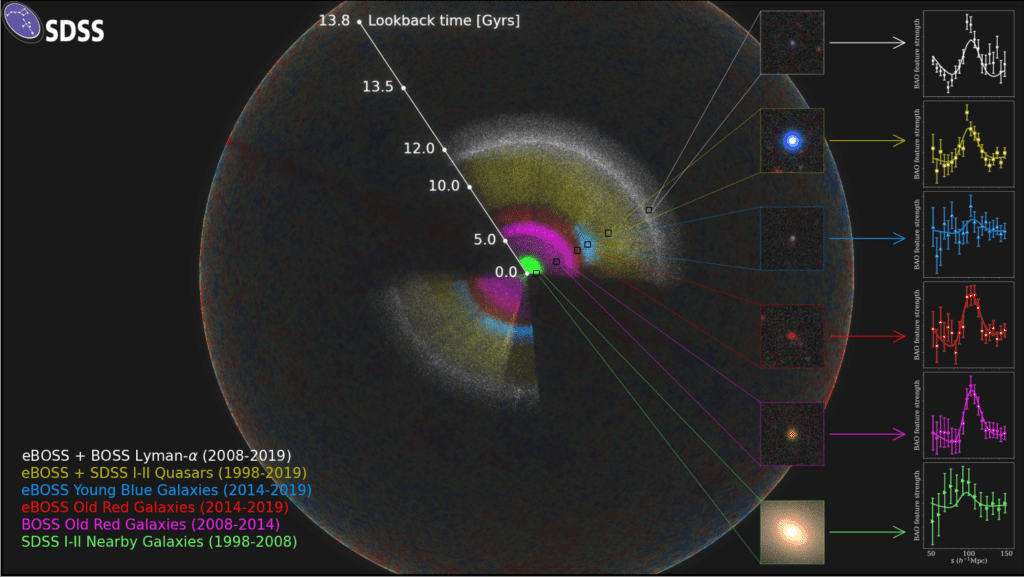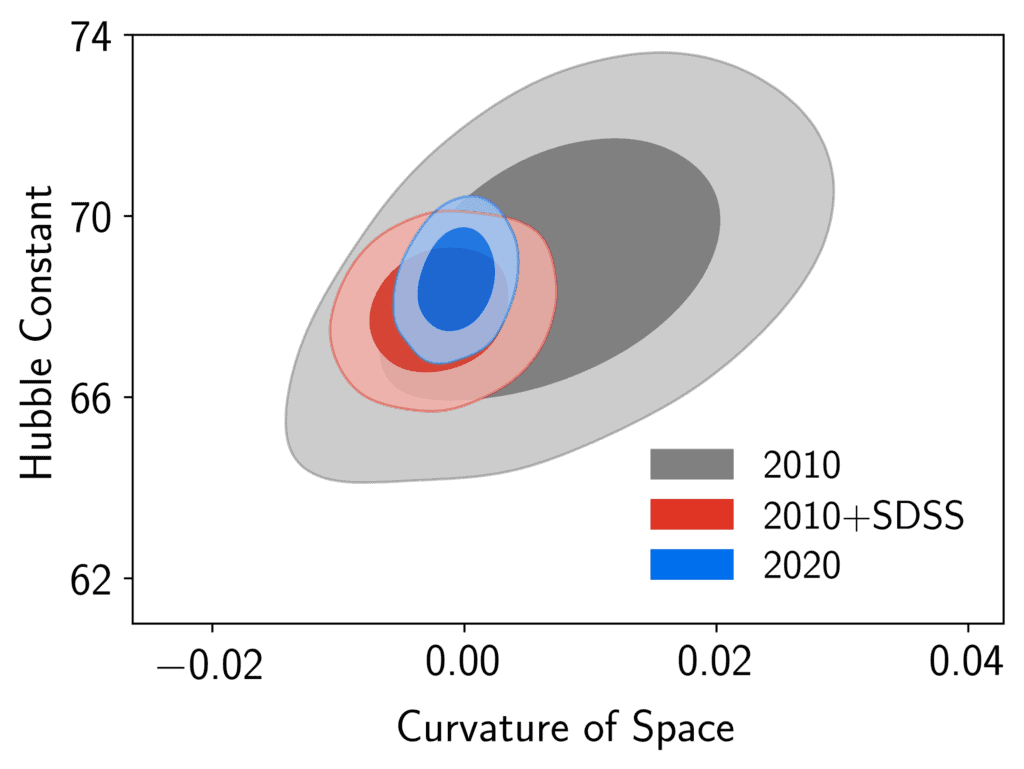Mankind has used maps to great effect for thousands of years, but this map is different. It’s a map of everything.

We are located at the center of this map. Image credit: Anand Raichoor (EPFL), Ashley Ross (Ohio State University) and the SDSS Collaboration
Our understanding of the universe is a mishmash of some bits which we understand fairly well, and others which are a complete mystery. For instance, we have a decent idea what the Universe looked like in its infancy, thanks to thousands of scientists who have studied the Cosmic Microwave Background (CMB) — remnant radiation from the early stages of the universe. We can also study the past few billion years by looking at the galaxies around us.
But between those two stages, what happens is in large part an enigma
“We know both the ancient history of the Universe and its recent expansion history fairly well, but there’s a troublesome gap in the middle 11 billion years,” says cosmologist Kyle Dawson of the University of Utah, who leads the team announcing today’s results. “For five years, we have worked to fill in that gap, and we are using that information to provide some of the most substantial advances in cosmology in the last decade.”
Building a map of the universe is different from most maps because it’s not just a map of places, but also a map of time. The universe has been expanding at an accelerated rate, yet we can only observe things at the speed of light. So when we look at something that’s really far away — say, 1 billion light-years away — we’re seeing it as it was 1 billion years ago. So a map of the universe is essentially a map of how the universe evolved. We have no way of knowing what these faraway objects are like now, we always see them with a lag imposed by light travel.
Over the course of the past two decades, astronomers from all over the world painstakingly added more and more data to the map, analyzing over 4 million galaxies and quasars, creating what Will Percival of the University of Waterloo in Canada calls the “complete story of the expansion of the universe.” The project, called Sloan Digital Sky Survey (SDSS) released the comprehensive analysis, the largest 3D map of the universe ever created.
“Only with maps like ours can you actually say for sure that there is a mismatch in the Hubble Constant,” says Eva-Maria Mueller of the University of Oxford, who led the analysis to interpret the results from the full SDSS sample. “These newest maps from eBOSS show it more clearly than ever before.”
According to these results, the expansion of the universe began to accelerate some 6 billion years ago, and it’s going ever faster since. There’s no clear explanation for this discrepancy, but one possible solution would be that a previously-unknown form of matter or energy from the early Universe might be influencing this acceleration. Making a map is one thing, but explaining things is a completely different beast.
The new results come from the extended Baryon Oscillation Spectroscopic Survey (eBOSS), one of the SDSS’s component surveys.
“Taken together, detailed analyses of the eBOSS map and the earlier SDSS experiments have now provided the most accurate expansion history measurements over the widest-ever range of cosmic time,” says Will Percival of the University of Waterloo, eBOSS’s survey scientist.
In particular, the eBOSS team’s measurement of the current rate of expansion of the Universe — the so-called “Hubble Constant” — is helping astronomers better understand one of the fundamental parameters of the universe: how fast it is changing. The value of the Hubble Constant has been finessed for decades, and while there are still many uncertainties, this survey also works to pin down this acceleration and how it changed over the billions of years.

“Taken together, detailed analyses of the eBOSS map and the earlier SDSS experiments have now provided the most accurate expansion history measurements over the widest-ever range of cosmic time,” says Will Percival of the University of Waterloo, eBOSS’s Survey Scientist. “These studies allow us to connect all these measurements into a complete story of the expansion of the Universe,” says Percival.
Overall, there have been 23 published papers (representing 500 pages) of new science from the eBOSS, marking one of the most comprehensive analyses of
“These studies allow us to connect all these measurements into a complete story of the expansion of the Universe,” concludes Percival.
Read the full announcement.






